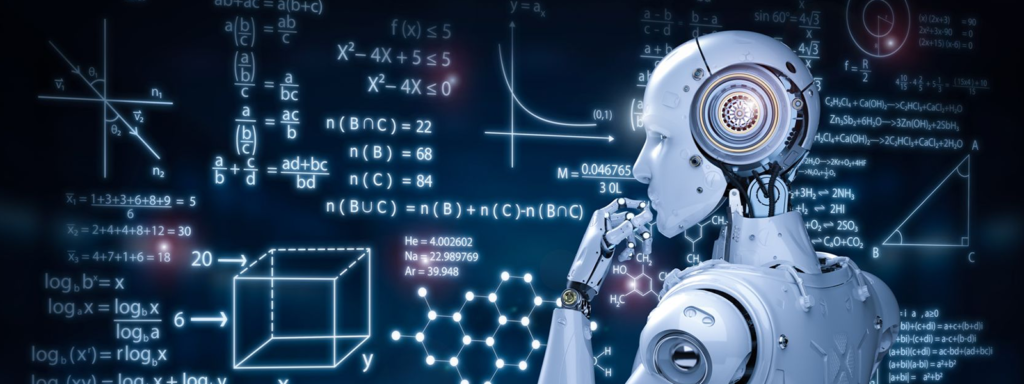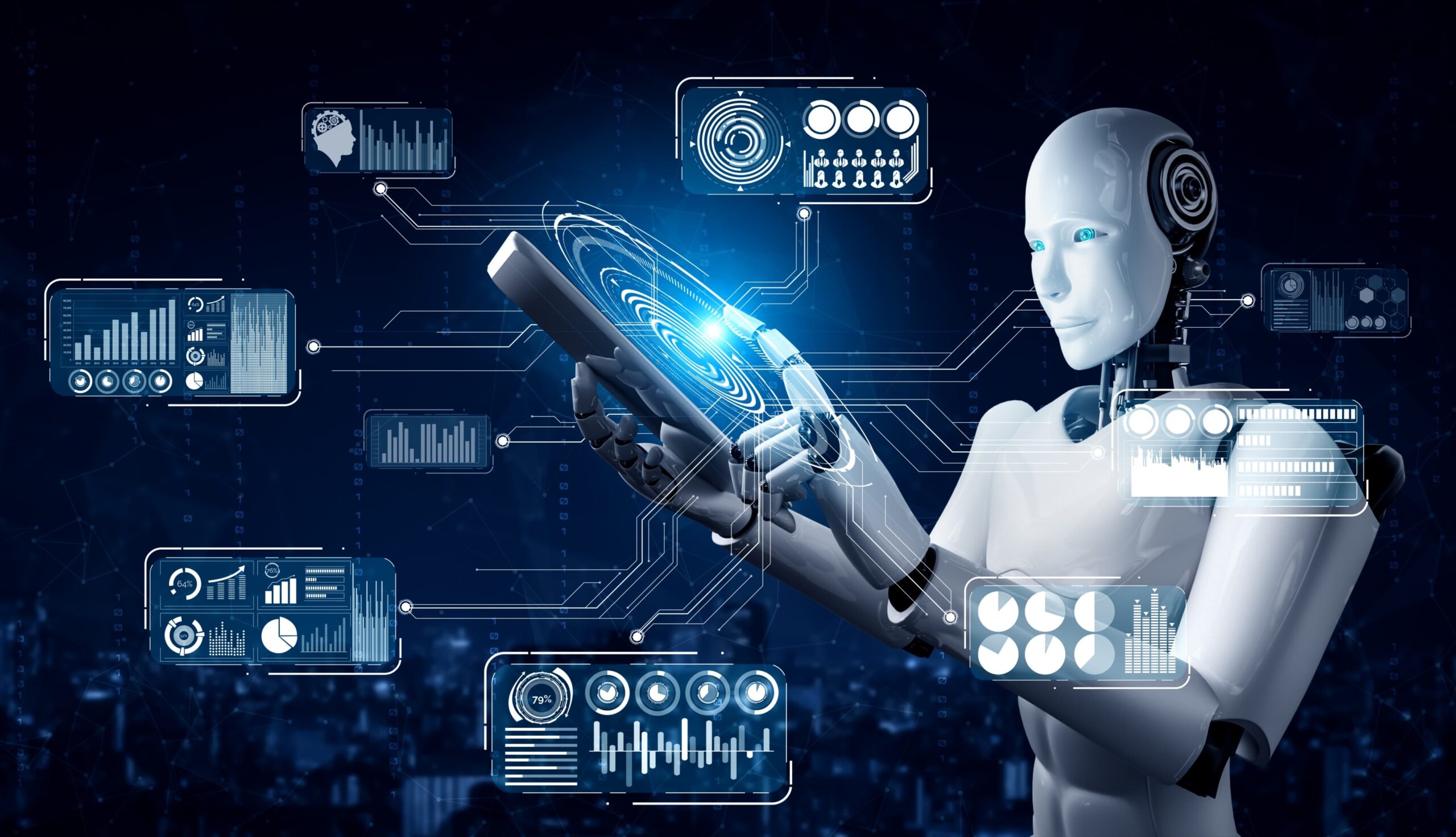Introduction
Hello everyone, and welcome to our video on Artificial Intelligence and Machine Learning. In this video, we’ll be exploring the exciting world of AI and machine learning, and what we can expect in the near future.

What is AI and Machine Learning?
To start off, let’s define what AI and machine learning actually mean. Artificial Intelligence refers to the ability of machines to perform tasks that typically require human intelligence, such as understanding natural language, recognizing patterns, and making decisions. Machine learning, on the other hand, is a subset of AI that involves training algorithms to learn from data and improve over time.
[Current Applications of AI and Machine Learning]
AI and machine learning are already being used in a variety of industries and applications, including healthcare, finance, transportation, and entertainment. For example, in healthcare, AI is being used to develop personalized treatment plans for patients based on their unique medical histories and genetics. In finance, machine learning is being used to detect fraud and predict market trends. And in entertainment, AI is being used to create realistic and immersive video games and virtual reality experiences.
[Future Applications of AI and Machine Learning]
Looking ahead, there are a number of exciting applications of AI and machine learning that we can expect in the near future. One area where AI is likely to have a major impact is in autonomous vehicles. With the development of self-driving cars, AI algorithms will be able to make real-time decisions based on a wide range of data inputs, such as traffic patterns, weather conditions, and pedestrian behavior.
Another area where AI is likely to be transformative is in the field of natural language processing. As AI algorithms become more advanced, they will be able to understand and interpret human language more accurately and contextually. This could lead to major breakthroughs in areas such as language translation, customer service, and even legal research.

[Challenges and Risks of AI and Machine Learning]
Of course, there are also a number of challenges and risks associated with the development of AI and machine learning. One major concern is the potential for AI to be biased or unfair, particularly in areas such as hiring and criminal justice. Another concern is the potential for AI to displace human workers, particularly in industries such as manufacturing and customer service.
[Recent Advances in AI and Machine Learning]
In recent years, there have been a number of major advances in the field of AI and machine learning. One area that has seen significant progress is deep learning, which involves training algorithms on large datasets using neural networks. Deep learning has been used to achieve breakthroughs in areas such as image recognition and natural language processing, and is being applied to an increasing number of real-world applications.
Another recent advance is the development of generative models, which can create new content based on patterns learned from existing data. Generative models have been used to create everything from realistic images and videos to music and written articles, and are likely to have many more applications in the future.
[The Importance of Data in AI and Machine Learning]
One of the key factors driving the development of AI and machine learning is the availability of large amounts of data. Without data, AI algorithms cannot be trained to learn and improve over time. As a result, there is a growing demand for data scientists and other professionals with expertise in data management and analysis.
However, there are also concerns about the use of data in AI and machine learning, particularly when it comes to issues of privacy and security. It will be important to ensure that data is collected and used in an ethical and responsible manner, and that individuals are able to maintain control over their own personal data.
[The Role of Ethics in AI and Machine Learning]
As AI and machine learning become more advanced and are used in increasingly complex applications, it will be important to consider the ethical implications of these technologies. For example, there are concerns about the potential for AI to be used for malicious purposes, such as cyberattacks and political manipulation.
There is also a need to consider the impact of AI on human society more broadly, including issues such as employment, inequality, and social cohesion. As AI and machine learning continue to evolve, it will be important to have ongoing discussions about the ethical and societal implications of these technologies, and to work to ensure that they are developed and used in a way that is consistent with our values and aspirations as a society.
[Applications of AI and Machine Learning]
AI and machine learning have already found a wide range of applications across a number of industries. In healthcare, for example, AI algorithms are being used to analyze medical images and help doctors diagnose diseases more accurately. In finance, machine learning is being used to detect fraud and assess credit risk. And in transportation, AI is being used to improve traffic flow and optimize routes for autonomous vehicles.
In addition to these applications, there are also many exciting new areas where AI and machine learning are likely to have a major impact. For example, researchers are exploring the use of AI to develop new materials, improve renewable energy systems, and advance space exploration.
[Challenges in AI and Machine Learning]
Despite the many advances that have been made in AI and machine learning, there are still a number of challenges that must be overcome in order to realize the full potential of these technologies. One major challenge is the need for more powerful and efficient hardware, as well as better algorithms that can take advantage of this hardware.
Another challenge is the need for better explainability and interpretability of AI and machine learning models. As these technologies become more complex, it becomes increasingly difficult to understand how they are making decisions and what factors are contributing to their outputs. This can lead to concerns about bias and fairness, as well as trust and accountability.
Finally, there are also concerns about the impact of AI and machine learning on employment, as these technologies have the potential to automate many jobs that are currently performed by humans. It will be important to ensure that there are opportunities for workers to reskill and transition to new roles, and that the benefits of these technologies are distributed fairly across society.
[The Future of AI and Machine Learning]
Looking forward to the future, it’s clear that AI and machine learning will continue to be major drivers of innovation and progress. As hardware becomes more powerful and algorithms become more advanced, we are likely to see even more impressive breakthroughs in areas such as natural language processing, computer vision, and robotics.
One area that is likely to be particularly important in the future is the development of AI systems that are able to reason and learn more like humans do. This will require a better understanding of human cognition and the development of new machine learning techniques that can incorporate more abstract and conceptual knowledge.
Another important trend to watch for is the growing integration of AI and machine learning with other technologies such as the Internet of Things (IoT), blockchain, and augmented and virtual reality (AR/VR). These combinations have the potential to create new applications and services that we can hardly imagine today.
[The Importance of Collaboration in AI and Machine Learning]
Given the complexity and scope of the challenges we face in AI and machine learning, collaboration is essential. It will be important for researchers, developers, policymakers, and other stakeholders to work together to address the ethical, social, and technical challenges that these technologies present.
Collaboration will also be essential for ensuring that the benefits of AI and machine learning are shared equitably across society. This will require an inclusive and participatory approach that engages a wide range of voices and perspectives.
[The Role of Education in AI and Machine Learning]
Finally, as AI and machine learning continue to play an increasingly important role in our lives and work, education will be essential. We will need to develop a new generation of professionals with the skills and knowledge necessary to design, develop, and deploy these technologies.
This will require a multi-disciplinary approach that includes computer science, statistics, mathematics, and other fields. It will also require a commitment to ongoing learning and professional development, as the pace of change in this field is likely to be rapid and ongoing.
[Conclusion]
In conclusion, AI and machine learning are rapidly transforming the world around us, and there’s no doubt that they will continue to have a major impact on our lives in the years to come. As we move forward, it will be important to be mindful of the challenges and risks associated with these technologies, and to work to ensure that they are developed and implemented in an ethical and responsible manner. Thank you for watching, and we’ll see you in the next video.




9c3ycr